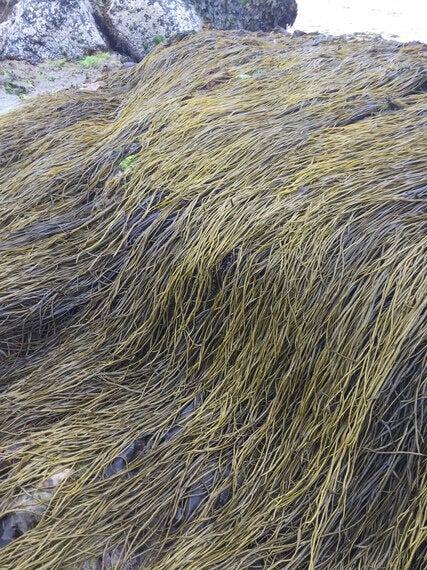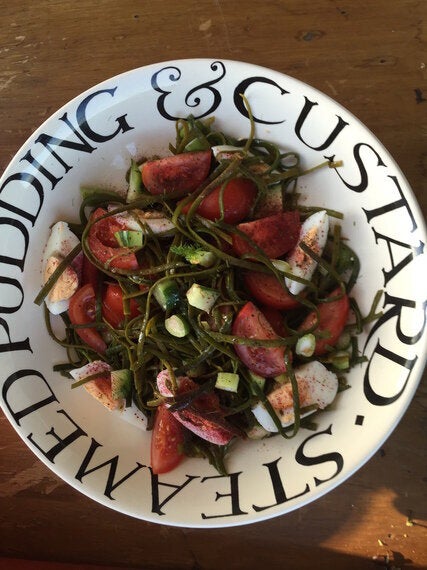Although Virgil regarded it with distain, families taking a break at the seaside over half term might consider seaweed.Beyond kids' fun at the beach, sea veg are useful in the kitchen too. Sushi aside, seaweed doesn't really get much British press, perhaps this is because many coastal folk still consider it a poverty food. In Let Your Kids Go Wild Outside there's a soap recipe, which takes advantage of the seaweed, carrageen, and other pressed ocean flowers are used in craft ideas. You only have to wash up a carrageen saucepan to feel the softness of seaweed. For crafting purposes, seaweeds contain a gel that's sufficient to 'glue' smaller species naturally. The artistic work of Edinburgh based Sara Dodd, and in America, Josie Iselin, exhibit the natural beauty of seaweed. Kids collecting storm cast seaweed can identify the species and then use it in beach art or in place of numbers on a sand hopscotch grid. Messing about with seaweed on the beach can be educational, creative and pleasurable.

Sea Spaghetti
Seaweed that is still attached to its holdfast (i.e. growing not storm cast) may be gathered at low tide, washed, dried and stored in an airtight container to use at a later date. Individual species of seaweed taste quite distinct but each guarantees an umami fix. Picking and cooking fresh seaweed is the coastal dweller and seaside holidaymaker's treat.Use scissors to cut the fronds well above the holdfast (think plant root).
Sea spaghetti or thongweed picked in spring is one of the easiest seaweeds to cook. A month or so ago, it cooked in noddle time but late spring sea spaghetti still fits in the category of fast cook pasta. Thongweed looks like wheat spaghetti but has added chameleon magic. Throw a handful of brown thongweed in a pan of boiling water and it becomes the brightest of emerald greens. This jewel coloured sea vegetable works well in a salad. The French have been bottling the idea for years. Britain was slow to the seaweed market but nowadays, you can buy this particular seaweed, fresh, in supermarkets. This is reassuring for sceptics who are a tad wary of wildness. Unlike some fungi, seaweeds aren't toxic, although some species may not taste delicious.
As summer progresses, sea spaghetti ages and requires a longer simmer in the saucepan. This point is pertinent if you've save this idea up for the longer, school summer holidays. Novice seaweed consumers should be discerning and eat seaweed one species at a time, as the Gaels did. Mix sea spaghetti 50:50 with wheat pasta if you are not an adventurous eater. In my experience kids love eating food that they've gathered themselves but the saucepan magic that occurs when sea spag hits boiling water might encourage some help in the kitchen too.

Seaside Salad
Serves 3
300g sea spaghetti
2 large hard boiled eggs
½ cucumber deseeded, bite sized chopped
Handful chopped fennel
2 large ripe tomatoes, sliced
3tbsps extra virgin olive oil
Juice half a lime
Freshly ground pepper
Cook the sea spaghetti in boiling water for 5 minutes (longer, later in the season). Drain and refresh in cold water. Shake well to remove excess water. Pop the seaweed into a bowl and add the eggs and prepared terrestrial vegetables. Mix the vinaigrette in a small jug and pour it over the salad. Season and lightly toss the ingredients together. Decant the salad in a serving dish and serve.